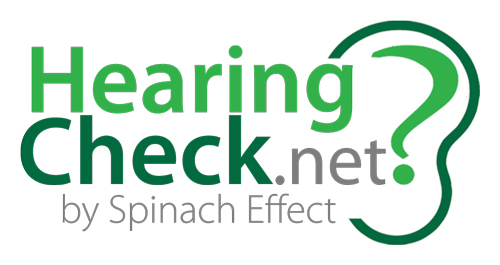The purpose of the solution is to determine whether a user has a significant hearing loss and, if they do, generate a qualified appointment in your locations. As our solution is designed to do this effectively in many settings, we need to account for background noise. (See also different uses under “How would you use it?”) So how can we account for background noise to accurately identify people who have aidable losses?
Noise Correction
Background noise invariably affects results of a hearing check in non-clinical environments. For example, even a sound booth and occluding headphones will not fully negate the effects of background noise on a busy floor of a Seniors Expo.
We are proud to say that our Touchscreen Hearing Check has been calibrated to provide accurate results in a variety of testing environments – from sound booths to noisy trade expos, and everything in between. Our noise correction algorithms are based on thousands of hours of user testing.

 Select background noise setting
Select background noise setting
Within the hidden Administration Area of the application you can select the type of environment (i.e. Background Noise Level) that the hearing checks will be conducted in. We load your iPads with “sound level meter” software so that this can be accurately selected. If this is not preselected, then the user will then see an additional “Select Background Noise Level” screen.
Calibration
When determining how much noise correction to apply to users results, we also account for the occlusion factor of the selected headphones (see below). That is, how well do they keep sounds out at each of the testing frequencies within 5 different environment types. (See Intellectual Property)
Significant Hearing Loss
We do not want to fill the calendars of your Hearing Care Professionals with people with normal hearing or mild losses. So we then need to apply an algorithm to look at the users Noise Corrected Thresholds and determine whether to recommend further action. We are looking to answer: “Does the user have an aidable loss in either ear?”
 Our Significant Hearing Loss Algorithm includes considerations for the following:
Our Significant Hearing Loss Algorithm includes considerations for the following:
- Headphones: The output level of tones is determined by calibration tables for headphones.
- Weighted Average Hearing Loss (WAHL): Calculate a weighted average hearing loss for each ear, placing greater emphasis on higher frequencies. 2000Hz and 4000Hz are more indicative of common high-frequency hearing loss and are also the least affected by background noise.
- Hearing Loss Description: Based on the WAHL, the hearing loss in each ear is classified as indicative of:
- Normal Hearing
- Some hearing loss
- Significant hearing loss
- No Hearing
While these are not textbook descriptions of different types of hearing loss (e.g. Moderately-Severe), they are far more digestible to and understood by users. Especially given that an audiologist will rarely be there to explain more textbook descriptions.
- Recommend Action: If a user has a significant hearing loss in either ear, they will be recommended to make an appointment.
(See Intellectual Property)
Headphone Calibration
We have calibrated the solution, using an iPad and a choice of two different types of headphones, to the accuracy of an audiometer in a range of environments. Interestingly, while we have the capability to recalibrate the solution, it has never been required. The two sets of headphones that we use are:
- Audiometric: TDH49 with X5A occluding cups, configured for single 3.5mm stereo jack.
- Standard: CAD MH310
